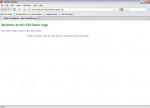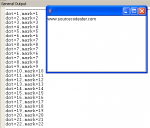Get Difference Between Two Strings in Java
This tutorial will teach you how to create a program that will get the difference between two inputted strings in java.
So, now let's start this tutorial!
1. Open JCreator or NetBeans and make a java program with a file name of StringDiff.java.
2.
- Read more about Get Difference Between Two Strings in Java
- Log in or register to post comments
- 169 views









